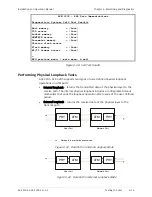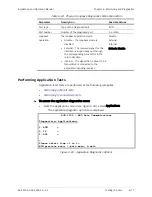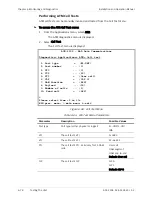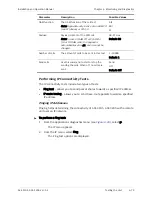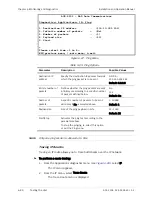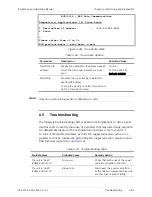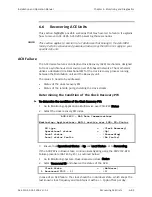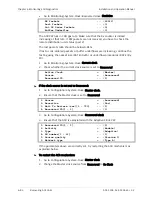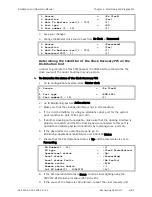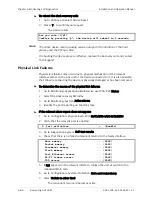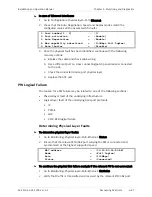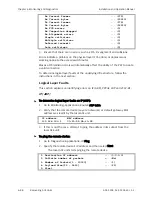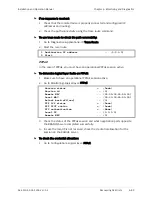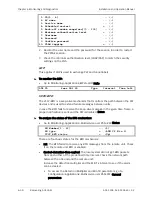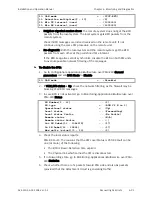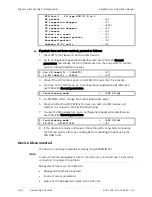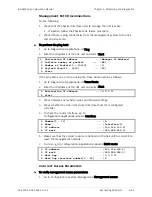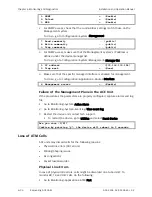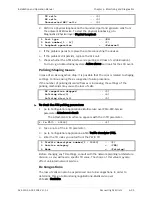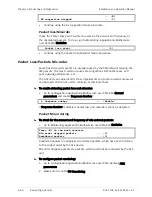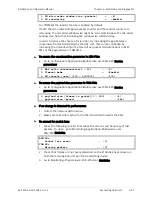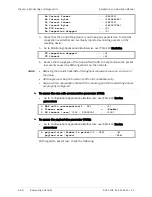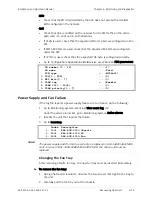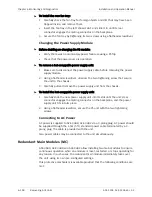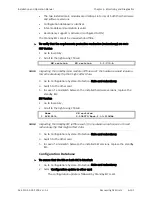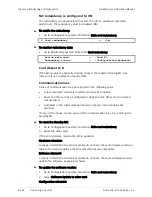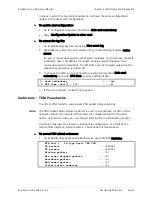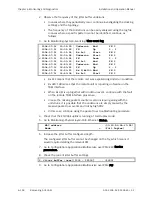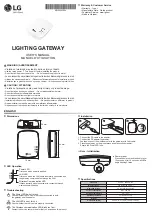
Installation and Operation Manual
Chapter
6 Monitoring and Diagnostics
ACE-3105, ACE-3205 Ver. 5.2
Recovering ACE Units
6-89
³
If no response is received:
1.
Check that the remote device is properly connected and configured (IP
addresses and routing).
2.
Check the path connectivity using the trace route command.
³
To use trace route to check the path connectivity:
1.
Go to Diagnostics>Applications>IP>Trace Route.
2.
Start the race route.
1. Destination IP address ... (0.0.0.0)
2. Start
PPPoE
In the case of PPPoE, you must have an operational PPPoE session active.
³
To determine logical layer faults on PPPoE:
1.
Make sure to have an operational PPPoE session active.
2.
Go to Monitoring>Logical layer>PPPoE.
Session status > (Down)
Session id ... (0)
Remote MAC ... (00-00-00-00-00-00)
Local MAC ... (00-00-00-00-00-00)
Actual back-off[sec] ... (0)
PPP LCP status > (Down)
PPP IPCP status > (Down)
PPP authentication > (None)
Local IP ... (0.0.0.0)
Remote MRU ... (0)
3.
Check the status of the PPPoE session and what negotiation parts opposite
the BRAS/LNS were completed successfully.
4.
In case the local IP is not received, check the credential allocation for the
session on the RADIUS server.
³
To check the credential allocation:
1.
Go to Configuration>Logical layer>PPPoE.

